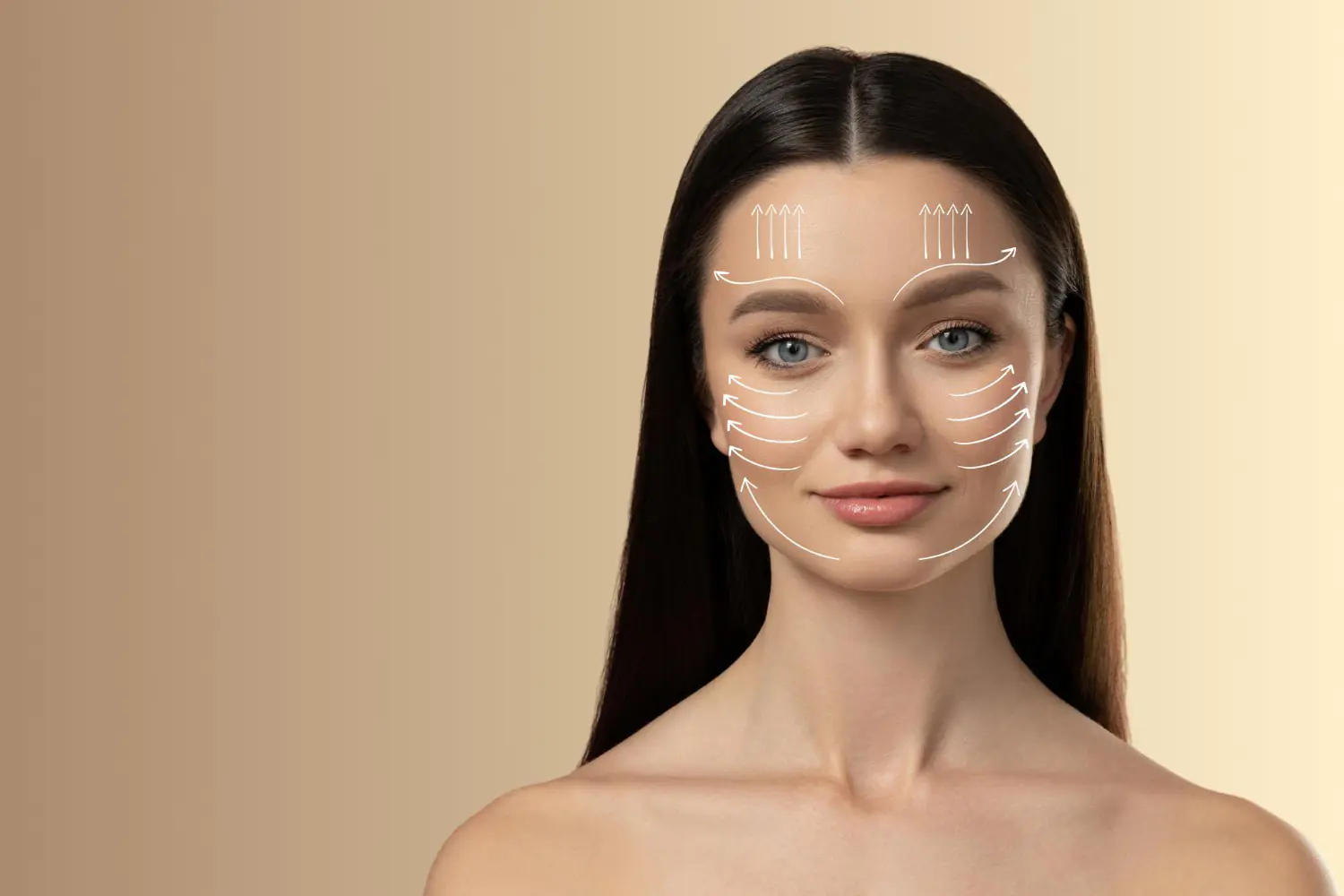By plastic surgeon Dr Dirk Kremer. Aging is a natural part of life, but its impact on our appearance can sometimes leave us feeling less confident. One of the most noticeable areas where aging shows is around the eyes, leading to droopy eyelids, puffiness, and sagging skin that can make
Understanding the Difference Between SMAS and Deep Plane Facelifts
Introduction
When researching facial rejuvenation, many patients encounter the debate of SMAS vs Deep Plane Facelift. Both techniques are well-established in plastic surgery and deliver powerful, natural results when performed by an experienced surgeon. Yet, misinformation online often blurs their distinctions.
As one of the most experienced Deep Plane Facelift surgeons in London, I believe clarity is essential. Understanding these differences helps patients make informed decisions and appreciate why the Deep Plane Facelift UK has become the gold standard in modern facial rejuvenation.
What Is the SMAS Layer?
The superficial musculoaponeurotic system (SMAS) is the fibromuscular layer beneath the facial skin and fat. It connects the skin to the deeper facial muscles and is responsible for the youthful structure of the midface and jawline.
As we age, this layer weakens and descends, contributing to sagging jowls, deep nasolabial folds, and neck laxity. Both SMAS facelifts and Deep Plane facelifts target this layer — but the methods differ in depth, precision, and outcome.
The Core Differences: SMAS Facelift vs Deep Plane Facelift
When patients compare a SMAS vs Deep Plane Facelift, they often find simplified definitions. In truth, there are three distinct SMAS-based techniques, each operating at a different surgical depth:
- SMAS Plication Lift
- Extended SMAS Lift
- Deep Plane Facelift
All three manipulate the same structure — the SMAS — but in very different ways.
1) SMAS Plication Lift – Surface Tightening Only
The SMAS plication facelift is the most straightforward technique.
The surgeon tightens the SMAS by placing sutures on top of it, folding or gathering the tissue without releasing or dissecting it. Facial ligaments are not released, so only limited movement is achieved. It improves mild sagging around the jawline and mouth but provides modest results for the midface.
Because this method works superficially, recovery is shorter, but the results are less dramatic and shorter-lasting than deeper lifts.
2) Extended SMAS Lift – Ligament Release with Separate Skin and SMAS Elevation
The Extended SMAS Lift is a far more complex and sophisticated version of the SMAS facelift. It uses the same natural glide plane as the Deep Plane Facelift, but the procedure unfolds differently:
The facial skin is first detached from the SMAS layer. The SMAS is then elevated separately, and the key retaining ligaments — including the zygomatic, masseteric, and mandibular ligaments — are released. Once mobilised, the SMAS can be tightened and repositioned in an upward and lateral vector, while the skin is re-draped independently.
This approach allows a good degree of lift, particularly along the jawline and neck. However, when the SMAS is separated from the skin and freed from its ligaments, it becomes extremely thin and fragile. During elevation, it may tear or rupture, limiting how far it can be safely lifted.
Despite these challenges, an expertly executed Extended SMAS Lift London can yield refined and long-lasting improvements — especially when performed by a highly experienced surgeon.
3) Deep Plane Facelift – Composite Flap and Structural Harmony
The Deep Plane Facelift UK takes a more advanced approach. Instead of separating the skin from the SMAS, both layers are lifted together as a composite flap. The retaining ligaments are released, just as in the Extended SMAS Lift, but the skin remains connected to the SMAS, preserving its natural integrity.
This protects the SMAS from tearing and allows the surgeon to mobilise tissues more effectively. Because both layers move in unison, the lift is stronger, smoother, and safer, producing natural definition and long-lasting rejuvenation.
The result is a refreshed, youthful appearance — never over-pulled. Patients seeking the best Deep Plane Facelift surgeon London often choose this method for its balance of power, precision, and subtlety.
Key Benefits of the Deep Plane Facelift
- Releases facial ligaments to reposition deeper tissues and restore the natural architecture of the midface.
- Restores midface volume and enhances cheek contour for a youthful, lifted appearance.
- Refines jawline and neck definition, improving harmony and facial balance.
- Tension-free skin closure, resulting in finer, more discreet scars.
- Improved blood perfusion, supporting healthy healing and longer-lasting results.
Preserved vascular integrity: Unlike a SMAS Facelift or Extended SMAS Lift, the skin in a Deep Plane Facelift London is not separated from the underlying SMAS. This means the tiny vessels running between the SMAS and the skin remain intact, maintaining optimal blood supply. Because the lift relies on repositioning the SMAS rather than pulling the skin, the superficial skin vessels are never overstretched. As a result, the risk of skin necrosis or delayed wound healing is drastically reduced — especially beneficial for smokers, even those who have stopped several weeks before surgery.
Results that typically endure 10–15 years, longer than most other facelift methods. Compared with a SMAS Facelift London or Extended SMAS Facelift UK, the Deep Plane Facelift UK delivers greater lift, safer healing, and a naturally supple appearance that evolves gracefully over time.
Who Is a Candidate for Each?
- SMAS Plication Lift – Best for patients in their 40s with early sagging and mild jowls.
- Extended SMAS Lift – Suitable for moderate to advanced facial laxity, when ligament release is needed.
- Deep Plane Facelift – Ideal for those seeking comprehensive, long-lasting rejuvenation of the midface, jawline, and neck.
Patients considering a Deep Plane Facelift UK often combine it with neck lift surgery or eyelid lift surgery for complete facial harmony.
SMAS Facelift vs Deep Plane: Which Is Right for You?
Choosing between a SMAS Facelift and a Deep Plane Facelift depends on your anatomy, degree of ageing, and desired outcome. If your goal is a subtle refresh, an Extended SMAS Facelift UK may be sufficient. If you want a more profound transformation that remains natural and expressive, the Deep Plane Facelift London is the superior choice.
A personalised consultation with a qualified Deep Plane Facelift surgeon UK will determine the most effective plan for your unique facial structure and goals.
Facelift Before and After – The Real Results
When comparing facelift before and after photos, notice how natural the contours appear with a deep plane approach. The jawline looks sharper, the cheeks more youthful, and the neck smoother — yet there’s no tension or distortion. This is the hallmark of an expertly performed Deep Plane Facelift London.
Beyond the Lift – Complementary Procedures
For comprehensive rejuvenation, some patients combine their facelift with:
- Neck lift surgery for neck contouring
- Eyelid lift surgery for refreshed eyes
- Facial implant surgery to enhance structural balance
These combinations can harmonise facial proportions and create truly transformative results.
Debunking the Facelift Myth
A persistent facelift myth suggests that surgical facelifts always look artificial. In reality, techniques like the Deep Plane Facelift and Vertical Dual-Plane Facelift are designed to preserve expression, not freeze it. Modern facelifts rejuvenate, rather than change, a person’s natural character — helping them look rested, confident, and completely themselves.
Conclusion
Both SMAS Facelift and Deep Plane Facelift techniques have valuable roles in modern plastic surgery. The difference lies in the depth, safety, and artistry of the lift. The Deep Plane Facelift UK achieves natural, multidimensional rejuvenation by restoring structure rather than stretching skin.
For patients seeking the best Deep Plane Facelift surgeon London, Harley Street offers world-class expertise, precision, and discretion. A consultation will clarify which method — SMAS Facelift vs Deep Plane Facelift — best suits your goals, anatomy, and expectations.













